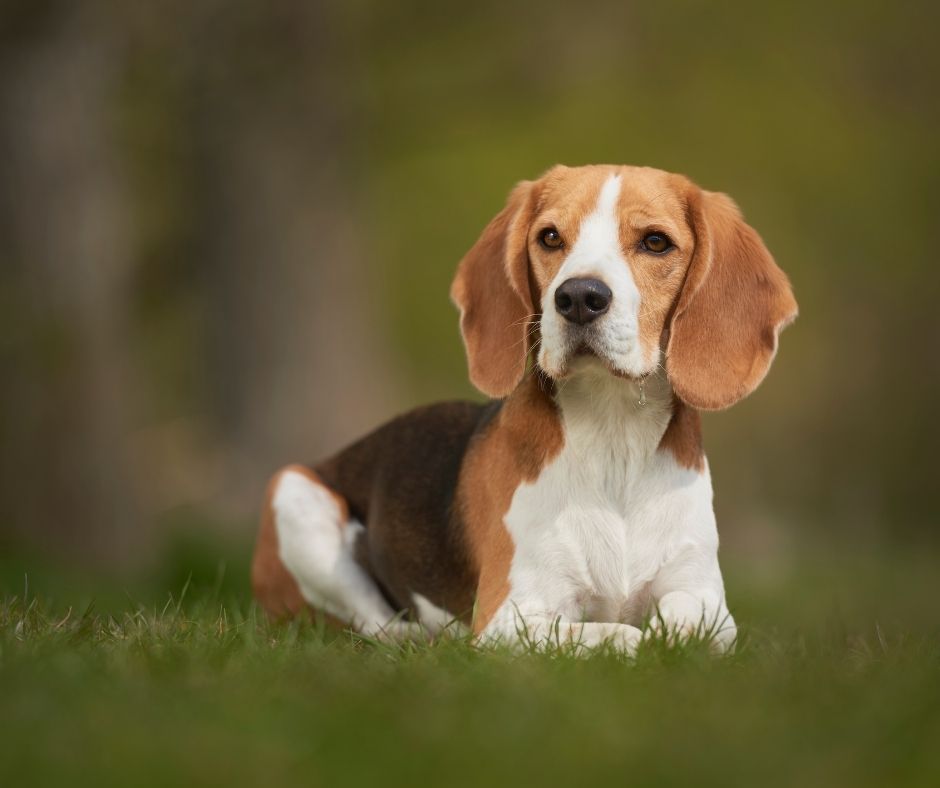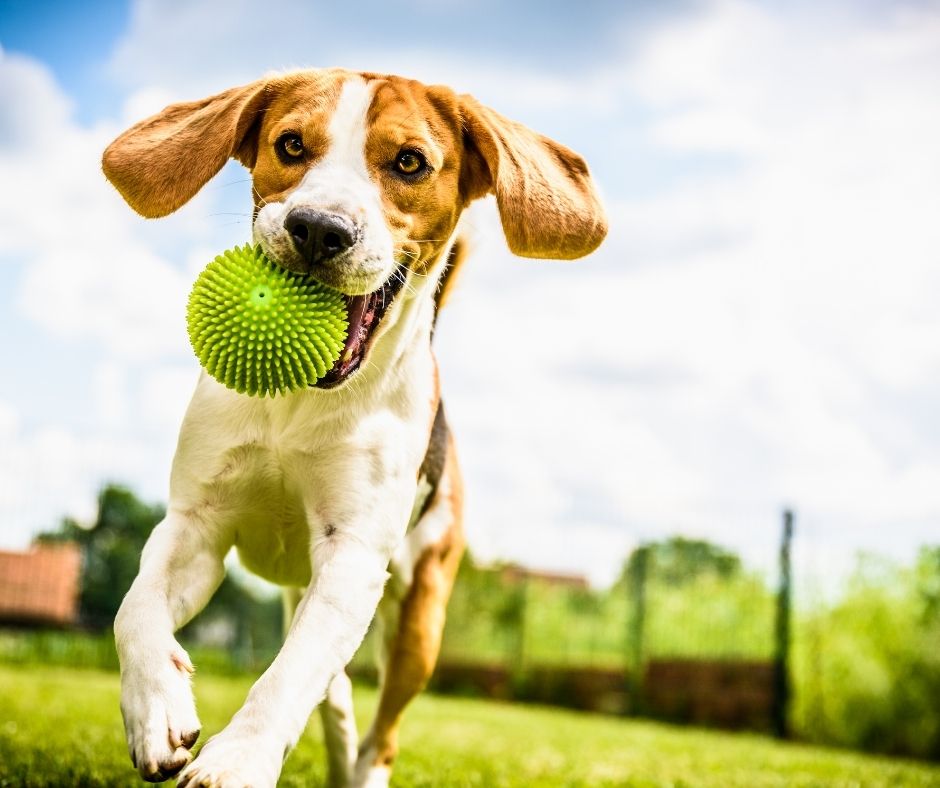
Getting to Know the Beagle
Beagles are adorable and friendly scent hounds. And particularly in their puppy years, they are active, curious, and in need of lots of attention and play. For this reason, the Beagle makes for the perfect family pet.
The Beagle is a descendant of hound dogs used for hunting in England years and years ago. Their strong sense of smell made them ideal for rabbit and pig hunting. And today, Beagles continue to serve humans in many ways through their extraordinary sense of smell.
To learn more about the Beagle, Animal Care Center has put together a breed guide. So, keep reading and fall in love with the intelligent and impressive Beagle breed.
Of course, if you have any questions we did not answer here, contact the office to get them all answered by our friendly and knowledgeable staff.
Beagle Appearance
The Beagle is a muscular medium-sized hound dog. Their snouts are boxy and broad. The ears of a Beagle are large, long, and set low. Their floppy ears reach the end of their nose when leaning down to sniff the ground.
The American Kennel Club says, “Those long ears actually catch scent particles and keep them close to the dog’s nose, so he can take in as much information as possible.”
The Beagle’s tail is relatively long and held high. And smooth, dense, short hairs make up their coat.
Color Variations
The coloration of the Beagle varies significantly among individuals. Most Beagles are tri-colored, although some are bi-colored or solid in coloration. And the hues of their coats differ, as well. Their typical colors are white, brown, black, blue, lemon, tan, and fawn.
The most common coloration of the Beagle is tri-colored with the following characteristics:
- White legs, belly, and chest
- Whitetip on the tale
- Black “saddle” or area across their back
- Tan around the saddle and covering their head and ears
In all, there are ten standard colors for Beagles with 25 variations. And unless you plan to show your hound professionally, coloration is a matter of preference.
Statistics for Beagles
Average Height:
Variation One- Up to 13 inches at the shoulder
Variation Two – Between 13 inches and 15 inches at the shoulder
Weight: 18 to 30 pounds, depending on the variation
Life Span: 10 to 15 years
Not sure if your rescue fits this description? Give us a call to find out at Animal Care Center.

Beagle Care
The Beagle is an ideal breed for active and caring families. However, it’s a perfect fit for an individual or couple able to give it all the attention it needs. Young Beagles, especially, need ample supervision and play.
Beagles are relatively clean dogs and do not require intense grooming. But you certainly will need to keep a close eye on this food thief. Beagles will eat non-stop if allowed, and weight problems can cause further health issues.
In the care paragraphs below, we will briefly go over the following:
- Nutrition
- Grooming
- Exercise
- Health
For further information on pet care and training classes, speak with our staff by clicking here.
Nutrition
Just like humans, the dietary needs of your Beagle will depend on its size, age, metabolism, and activity level. That being said, you should be feeding any dog quality food to keep them healthy. The recommended daily diet for the Beagle is ¾ to 1.5 cups of dry food, separated into two meals.
It is essential to note that Beagles are notorious for overeating. They are highly food-driven and will take any chance to raid the pantry or seal food from the counters. If your Beagle is overweight, major health problems may be a concern.
Grooming
Because of its double coat, you’ll need to brush your Beagle weekly, at the very least. Shedding is more common in the Spring, so you may want to brush your hound more often during this time to keep it under control.
Additionally, a Beagle’s ears can easily become infected. Every two weeks or so, check for signs of infection and buildup.
Finally, like with any other breed, you’ll want to brush their teeth regularly and trim their nails.
Exercise
Most Beagles will need plenty of space to run around and explore, especially puppies. However, do not let your Beagle roam unsupervised or without durable and intact fencing. They are known for getting carried away with a scent and running off. Due to this characteristic, it’s best to keep an eye on your hound when playing in the backyard.
As Beagles mature, they spend more time relaxing and lazing around. Keep your Beagle active with a couple of long walks a day and plenty of backyard play.
Health
Similar to many breeds, the Beagle is susceptible to several health issues. And not all Beagles will experience these problems, but it is essential to be aware of what health issues can arise.
The following are some of the most common health issues in Beagles:
- Back/Neck Pain (IVDD Disease)
- Beagle Pain Syndrome (SRM)
- Bladder Cancer
- Cherry Eye
- Epilepsy
- Hip Dysplasia
Furthermore, the best care you can give your Beagle is to have an excellent veterinarian to rely on. That is what Animal Care Centers is all about, providing the best care for pets and their owners.

Animal Care Center Loves Beagles and All Their Furry Family Members
The total preventative care of your pet is our pleasure. From the moment you enter Animal Care Center, you’ll be among the friendly staff, owners, and pets who prefer Dr. Williams.
So, you need not worry one bit.
What’s more, the team will welcome your pet with open arms putting your loved ones at ease.
The best care for your furry family member is at Animal Care Center. We provide complete care for all your pet’s health needs, including dental care, internal medicine, and emergency care.
Caring for the total pet is our specialty. From eyes and ears to testing and surgery, the people of Smyrna, Georgia, and the Greater Atlanta Area can count on the fantastic staff at Animal Care Center and our own Dr. Williams.

